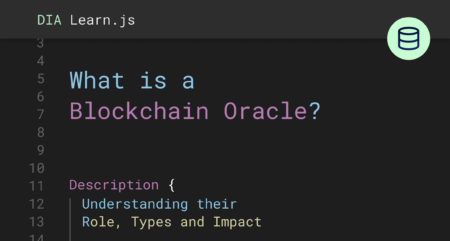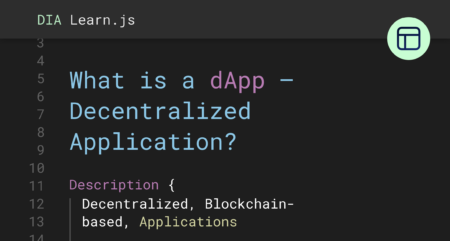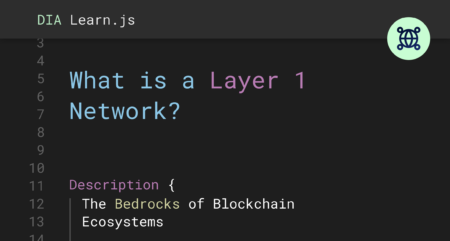What is a Layer 2 Network? Types, Examples, Use Cases
Discover how Layer 2 solutions like state channels, sidechains, and rollups are revolutionizing blockchain scalability and efficiency. Learn about popular Layer 2 protocols, their impact on transaction costs, and the future of blockchain development.

Update on March 13, 2024: Dencun upgrade goes live on Ethereum making transaction costs on Ethereum L2s 10 times lower. Read more below.
What is Layer 2 in Blockchain and How Does it Work?
Layer 2 (L2) solutions in blockchain technology are designed to enhance scalability and efficiency while maintaining the security and decentralization of the underlying blockchain, often referred to as Layer 1. These solutions operate on top of the main blockchain, allowing faster and more cost-effective transactions.
Layer 2 solutions typically involve off-chain processing, significantly reducing the main blockchain’s load. Transactions are processed outside of the main chain and then batched together to be verified and recorded on Layer 1. This process is key to increasing transaction throughput and reducing latency.
Layer 2 solutions have emerged as crucial components in addressing the blockchain scalability challenge. This has led to a significant influx of new L2 chains, with prominent companies like Coinbase and Consensys stepping into the arena with their respective L2 chains, Base and Linea. Moreover, we have seen Celo transitioning from a Layer 1 to an Ethereum Layer 2.
This shift underlines the growing importance and potential of Layer 2 solutions in the blockchain ecosystem. Let’s dig in more about the different types and what makes them so special.
Differences Between Various Layer 2 Technologies
Layer 2 solutions in the blockchain sphere offer various approaches to scaling and enhancing the efficiency of the underlying Layer 1 blockchains. Understanding the differences between these technologies is crucial for recognizing their unique applications and benefits.
| Technology | Characteristics | Use Cases | Advantages | Limitations |
|---|---|---|---|---|
| State Channels | Two-way communication channels for off-chain transactions. | Frequent, bidirectional transactions like gaming or streaming services. | Instant transactions, high privacy. | Requires locking up funds and mutual trust between parties. |
| Sidechains | Independent blockchains running parallel to the main chain, connected via a two-way peg. | Specific applications requiring different parameters than the main chain. | Customizable features, independent governance. | Security relies on the sidechain’s consensus mechanism. |
| Rollups (Optimistic and zk-Rollups) | Aggregate multiple off-chain transactions into a single main chain transaction. | Scalable DApps, DeFi platforms. | Enhanced efficiency and privacy (zk-Rollups); EVM compatibility (Optimistic Rollups). | Complex development (zk-Rollups); Withdrawal delay (Optimistic Rollups). |
| Plasma | Framework for creating child chains off the main Ethereum chain. | High-throughput applications like payments and token swaps. | High scalability and efficiency. | Complex child chain management, limited functionality. |
Table 1: Differences between different Layer 2 technology stacks.
1. State Channels:
- Functionality: State channels allow two parties to transact multiple times off-chain, with only the initial and final states recorded on the blockchain.
- Use Cases: Ideal for situations requiring frequent, bidirectional transactions, like gaming or streaming services.
- Example: The Lightning Network for Bitcoin.
- Pros: Instant transactions and high privacy.
- Cons: Requires locking up funds and mutual trust between parties.
2. Sidechains:
- Characteristics: Independent blockchains that run parallel to the main blockchain, connected through a two-way peg.
- Application: Useful for specific use cases or applications requiring different parameters than the main chain.
- Example: xDai Chain for Ethereum.
- Advantages: Customizable features and independent governance.
- Limitations: Security relies on the sidechain’s own consensus mechanism, which may be less secure than the main chain.
3. Rollups (Optimistic and zk-Rollups):
- Mechanism: Aggregate multiple off-chain transactions into a single transaction on the main chain.
- Types:
- Optimistic Rollups: Assume transactions are valid by default and only run computations in case of a dispute.
- zk-Rollups: Use zero-knowledge proofs to validate transactions off-chain before posting them to the main chain.
- Use Cases: Scalable DApps, DeFi platforms.
- Benefits: zk-Rollups offer enhanced privacy and efficiency; Optimistic Rollups are easier to implement with EVM compatibility.
- Drawbacks: zk-Rollups are complex to develop; Optimistic Rollups have a delay in withdrawal time.
4. Plasma:
- Design: Framework for building scalable applications, creating child chains off the main Ethereum chain.
- Usage: Suited for high-throughput applications like payments and token swaps.
- Distinctive Feature: Utilizes fraud proofs to secure transactions.
- Advantages: High scalability and efficiency.
- Challenges: Complexity in managing child chains and limited functionality compared to the main chain.
The diversity of Layer 2 technologies highlights the adaptability and potential of blockchain technology to cater to a wide range of applications and use cases. As the blockchain space continues to evolve, these Layer 2 solutions will play a pivotal role in driving mainstream adoption and practical utility of blockchain networks.
What are the Most Popular Layer 2 Solutions Available Today?
The blockchain industry has seen a surge in the development of Layer 2 solutions, each designed to address specific challenges of scalability and efficiency in Layer 1 blockchains. Here, we explore some of the most popular Layer 2 solutions that are currently in use.
1. Lightning Network (Bitcoin):
- Overview: The Lightning Network is a prominent Layer 2 solution for Bitcoin, enabling faster and cheaper transactions.
- How it Works: It utilizes state channels to allow users to transact off-chain, with the final settlement occurring on the Bitcoin blockchain.
- Use Cases: Ideal for micropayments and frequent, small transactions, drastically reducing the cost and time associated with Bitcoin transactions.
2. Optimism and Arbitrum:
- Nature: Both are Optimistic Rollup solutions for Ethereum.
- Functionality: They bundle multiple transactions into a single one, reducing the load on the Ethereum mainnet.
- Advantages: These solutions offer faster transaction speeds and lower fees while maintaining Ethereum’s security and decentralization.
Chart 1: Total Volume Locked and Volume in the Arbitrum network. Biggest L2 in 2023 in Volume.
3. Polygon Network:
- Overview: Originally known as Matic Network, Polygon is a multi-chain scaling solution for Ethereum.
- Key Features: It combines the Plasma Framework and proof-of-stake (PoS) sidechains to improve scalability.
- Impact: Polygon has gained popularity for supporting various decentralized applications (dApps) and offering a better user experience with lower transaction fees and faster confirmation times.
Chart 2: Chart illustration Polygon TVL and Volume. Polygon is second to Arbitrum in terms of TVL.
4. zkSync and StarkWare:
- Type: Zero-Knowledge Rollups (zk-Rollups).
- Mechanism: They use cryptographic proofs to validate transactions off-chain before posting them to the Ethereum blockchain.
- Benefits: These protocols provide enhanced security and scalability, with StarkWare focusing on trading and zkSync on general-purpose smart contracts.
Chart 3: Chart illustrating zkSync Totalal Volume Locked and Volume
5. Gnosis Chain:
- Description: A sidechain solution that runs parallel to Ethereum.
- Characteristics: Known for its stable transaction costs, as it uses the DAI stablecoin for fees.
- Usefulness: xDai is particularly useful for DApps requiring stable transaction fees and fast confirmations.
Chart 4: Chart illustration Gnosis’s Total Volume Locked and Volume
How Layer 2s Enhance Transaction Speed, Efficiency, and Scalability
Understanding the Role of Layer 2 in Blockchain
Layer 2 solutions are pivotal in addressing the scalability challenges of blockchain networks. They are designed to work on top of the existing blockchain (Layer 1), providing mechanisms to handle transactions more efficiently and rapidly. The core purpose of these solutions is to augment the capacity and speed of the blockchain without compromising its security and decentralization.
Enhancing Transaction Speed and Efficiency
- Off-Chain Processing:
- Layer 2 solutions handle transactions outside the main blockchain, significantly reducing the load and congestion on Layer 1.
- This off-chain processing allows for faster transaction confirmations and increased throughput.
- Batch Processing:
- Technologies like Rollups consolidate multiple transactions into a single transaction on the main chain.
- This batching of transactions reduces the number of individual transactions that need to be processed by Layer 1, leading to greater efficiency.
- Instant Transactions:
- In solutions like state channels, transactions can be nearly instant, as they don’t require immediate confirmation by the entire network.
- Reduced Transaction Costs:
- By optimizing the processing of transactions, Layer 2 can offer significantly lower transaction fees compared to Layer 1.
Impacting Blockchain Scalability
- Increased Transaction Capacity:
- Layer 2 solutions can process a larger number of transactions per second (TPS) than Layer 1, addressing one of the most critical scalability issues in blockchain.
- Reducing Network Congestion:
- By offloading a significant portion of transactions from the main chain, Layer 2 solutions help in reducing network congestion on Layer 1.
- Efficient Resource Utilization:
- Layer 2 enables more efficient use of block space and network resources on the main blockchain.
How Do Layer 2 Protocols Interact with Layer 1 Blockchains?
Layer 2 protocols are designed to work in tandem with Layer 1 blockchains, providing scalability and efficiency while leveraging the security and decentralization of the underlying main blockchain. Understanding their interaction is key to appreciating the full potential of Layer 2 solutions.
The Interplay Between Layer 1 and Layer 2:
- Complementary Relationship:
- Support Role: Layer 2 protocols are built on top of Layer 1 blockchains, aiming to complement rather than replace the foundational layer.
- Security Foundation: Layer 1 blockchains provide the security and trust layer, upon which Layer 2 solutions build their scalability features.
- Data Handling and Transaction Verification:
- Off-Chain Processing: Layer 2 handles most transaction processing off-chain, significantly reducing the data load on Layer 1.
- Final Settlement: The final state or a compressed version of transactions is eventually settled on the Layer 1 blockchain, ensuring the integrity and finality of transactions.
- Interaction Mechanisms:
- Smart Contracts: Many Layer 2 solutions use smart contracts on Layer 1 for anchoring or finalizing transactions.
- Bridges: Cross-chain bridges facilitate the transfer of assets and data between Layer 1 and Layer 2, enabling interoperability and fluid movement of value.
Scalability and Security Balance:
- Leveraging Strengths: Layer 2 solutions leverage the security and decentralization of Layer 1 while providing the scalability and speed required for practical use cases.
- Ensuring Consistency: The interaction between layers must maintain data consistency and integrity, avoiding double-spending and other potential security issues.

The Ethereum Dencun Upgrade: Game Changer for L2
The recent Ethereum Dencun upgrade marks a pivotal moment in the blockchain’s journey towards scalability, efficiency, and reduced transaction costs.
Proto-Danksharding: The Core of Dencun
At the heart of the Dencun upgrade is the introduction of proto-danksharding, a significant step forward in Ethereum’s scalability efforts. Proto-danksharding brings forth the concept of ephemeral data blobs, enabling a more efficient system for data storage on the blockchain. This system segregates blob data from regular transactions, thereby slashing the cost of data storage dramatically.
Ethereum Improvement Proposals (EIPs) such as EIP-4844, EIP-1153, EIP-4788, and EIP-6780, integral to the Dencun upgrade, pave the way for this enhanced data management and cost efficiency. By facilitating a cheaper and more streamlined data storage solution, Ethereum is setting the stage for Layer-2 networks like Optimism, Arbitrum, Base, and others to thrive, fostering a more scalable and economical development environment.
Impact on Layer-2 Networks
By significantly reducing data storage costs, the upgrade ensures that Layer-2 networks can offer much lower transaction fees. Specifically, the upgrade is expected to lower rollup transaction costs by up to ten times, depending on the demand for blob space. This reduction is anticipated to boost the economic viability and scalability of Layer-2 networks, encouraging the development of more complex applications on these platforms. At the same, as more Layer-2 networks adopt blobs, it is expected to transaction costs to slightly grow in these networks.
after 2 years of hard work, blobs are now live on @base
before: $0.31
after: $0.00 (but actually $0.0005)wallets need to update to handle these cost reductions! pic.twitter.com/solIX9D4HM
— Jesse Pollak (jesse.xyz) 🛡️ (@jessepollak) March 14, 2024
The Road Ahead
The Dencun upgrade is a monumental step in Ethereum’s roadmap towards a scalable, secure, and decentralized blockchain. However, it also sets the stage for the full implementation of danksharding, expected to further revolutionize Ethereum’s data management and transaction processing capabilities. As Ethereum continues to evolve, the development and adoption of Layer-2 scaling solutions are expected to play a pivotal role in achieving the network’s vision for a vast ecosystem of decentralized applications.
The Layer 2 Paradox
The L2 Paradox highlights a counterintuitive issue in Ethereum’s Layer 2 (L2) roll-ups: the lack of users leads to higher costs and slower transaction finality, contradicting the expectation of lower costs. Despite the technological capacity for high transactions per second (TPS), these networks are underutilized. Ethereum, processing more transactions than several L2s combined, reveals that low activity on L2s results in higher individual transaction costs. This is because about 95% of an L2 transaction’s cost is allocated to posting data on the mainnet. With fewer transactions, the cost per transaction increases.

Furthermore, this situation creates a cyclical problem where L2s struggle to achieve economies of scale due to low usage, leading to higher costs and further discouraging user adoption. For example, Ethereum handles significantly more transactions than its L2 counterparts like Arbitrum One and Zk-sync. Even with popular applications like Uniswap, a large majority of transactions still occur on Ethereum. The economic attractiveness of L2s remains questionable during low-activity periods, potentially leading to market consolidation or mergers and acquisitions among roll-ups unless they evolve into robust, independent ecosystems.

Layer 2 Networks FAQ
The Dencun upgrade introduces proto-danksharding and data blobs, significantly reducing the cost of data storage on Ethereum. This development directly impacts Layer-2 networks by lowering transaction costs, with estimates suggesting a reduction by up to ten times. This makes Layer-2 solutions more economically viable and scalable, potentially fostering the development of more complex and efficient applications on these networks.
Blobs make rollups cheaper because they allow for the temporary storage of transaction data in a more cost-effective way. Why is that? Rollups work by grouping multiple transactions into one and then verifying them on Ethereum. They need the data to be available so it can be checked for correctness, but not available forever. Therefore, blobs provide this data storage for a short time (available for long enough for anyone to download and check) reducing overall expenses for rollups.
Yes, by optimizing the way data is stored and reducing costs for Layer-2 networks, EIP-4844 can lead to faster and more efficient Ethereum transactions. The introduction of blobs means less congestion and lower fees, which in turn can contribute to quicker transaction processing across the Ethereum network.
Layer-2 networks are solutions built on top of a base blockchain (like Ethereum) to increase transaction speed and reduce costs without compromising on security. They handle transactions off the main chain, then report the results back, offering scalability to crowded networks.
By processing transactions off the main blockchain and then batching them together for validation, Layer-2 solutions reduce the congestion on the network. This leads to faster transaction times by alleviating the load on the main chain.
The Ethereum Dencun upgrade is a significant network update designed to enhance scalability, security, and efficiency. It introduces key features like proto-danksharding through EIP-4844, aiming to reduce transaction costs and improve the overall performance of the Ethereum network and its Layer-2 ecosystems.







